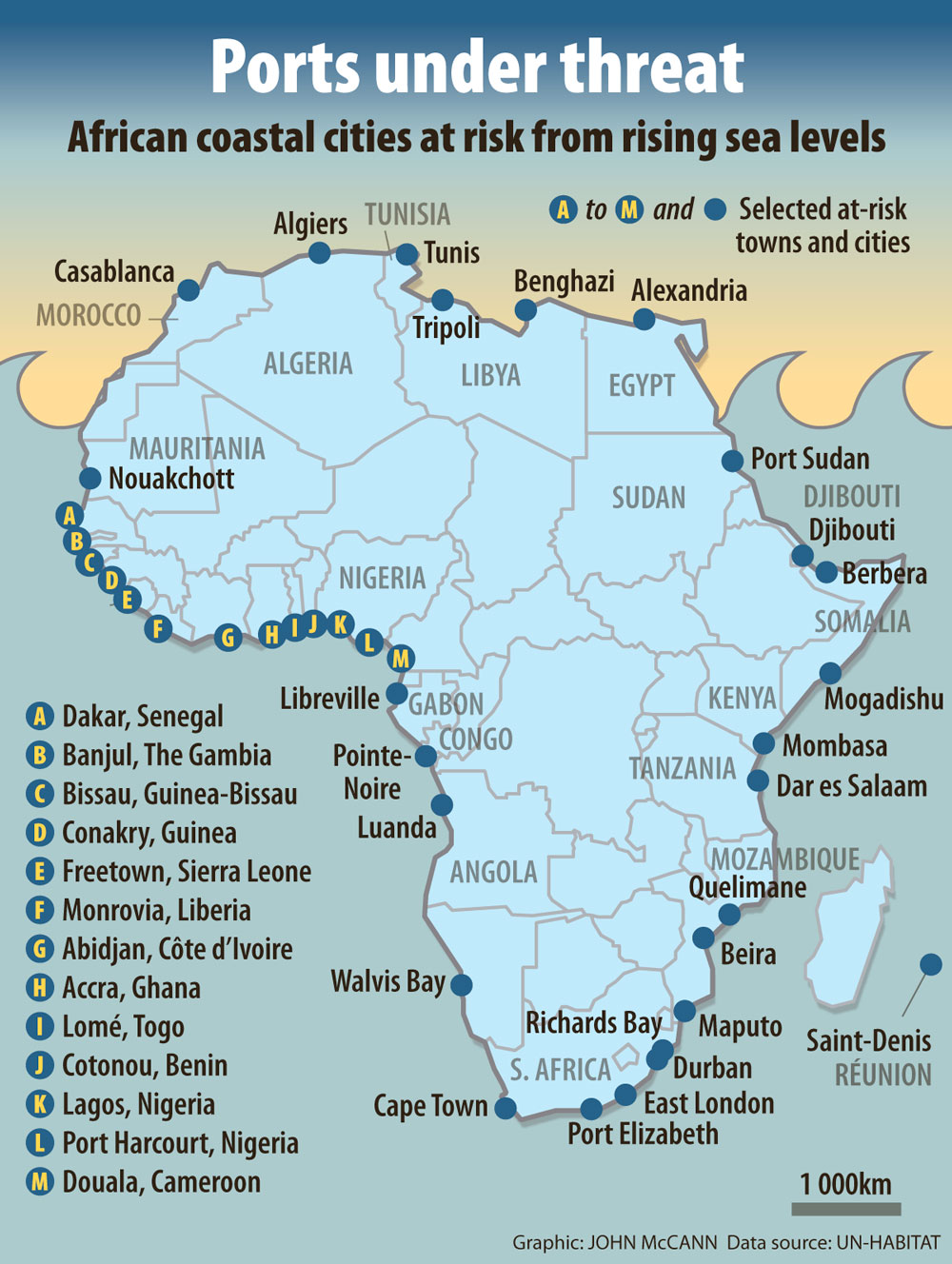Rundown grandeur
In the next 13 years, coastal cities will face “catastrophic” floods twice as often as they do now because of rising sea levels, according to new research.
Previous research has shown the effect of rising sea levels on coastlines (it changes them, eating away at the coast), but has not looked at how the rising levels exacerbate the floods and storm surges that happen in the normal course of events.
This is an acute issue because global sea levels are rising by about four millimetres a year. That doesn’t seem like much. But it means four millimetres on every coastline around the whole world.
And the rate of increase is accelerating as ice caps melt, pouring water into the ocean, and the ocean warms, expands and so takes up more space.
The United Nations Intergovernmental Panel on Climate Change predicts that sea levels will rise by up to a metre by 2100. Other projections vary between less than that and three metres. Each one is plausible as it is hard to predict how the world will reach the dramatic change being forced on it by global warming.
But all the scenarios are bad.
The new research – titled Doubling of Coastal Flooding within Decades Due to Sea-level Rise – looked at what existing weather systems will do when the sea levels rise.
Published in the journal Scientific Reports, it was done by a team from the University of Illinois, in Chicago.
It concluded: “One metre of sea-level rise is going to be a game-changer for the coastal zone. You’ll see a pretty scary proposition [for what the future will look like].”
This is because the storms and floods that already eat away at cities such as Durban will not only be more intense, they will also start off a higher point – because the sea level will be higher.

That means storm surges and heavy sea swells will penetrate further inland. Much of South Africa is protected from this because of its rocky coastline. But a study by the Council for Scientific and Industrial Research (CSIR) – titled Recent Extreme Events along the Coast of South Africa – noted that 50% of that coastline is made up of beaches, estuaries and lagoons.
This is also where the country’s major coastal cities – Cape Town, Durban, Port Elizabeth, East London and towns along the Garden Route – are located. Beaches, estuaries and lagoons mean low-lying and wide-open gaps in the coastline, through which increased sea levels and storm surges can flow inland.
Those surges are already a problem in South Africa. Wave height already reaches up to eight metres.The CSIR says: “Such large waves possess considerable erosive power and, if coastal defences are breached, the land behind is easily inundated.”
Inundation is already taking place, and is happening with increasing frequency in Durban in particular.
Research by the national environment department has shown that the growing danger of ocean-level increases is a particular problem for coastal cities. This is because people move there in large numbers “under the assumption of a stable and unchanging coastal environment”.
But that assumption does not hold in a rapidly warming world. And the dangers posed by that warming are further exacerbated by a lack of local research into what ocean-level increase will do to the coastline this century.
The department noted: “There is an urgent need to quantify the extent of the impacts of climate change.”
The Illinois research has filled in some of the gaps in that knowledge. It means that cities know they need to build higher walls and bulwarks against flood waters, and they have to practise emergency responses to streets regularly ending up under water.
Even then, those measures are only a stopgap. The researchers conclude: “The maps of increased flooding potential suggest a dire future.”